“I had been at work about two months when Christmas came on – and here I must relate a little anecdote. The principal and his lady were invited to a part among their friends and the other boy was permitted to go to his father’s to spend the holidays, when it devolved on me to stay at home and keep house. There was nothing left me in charge to do, only to take care of the house. There was a large cat that generally lay about the fire. In order to try my mechanical powers, I concluded to make a suit of clothing for puss, and for my purpose gathered some scraps of cloth that lay about the shop-board, and went to work as hard as I could.”
Such was the recollection of James Potter Collins on his childhood experience as a Tailor’s apprentice in 1775. Born in 1763 in Tryon County, North Carolina, Collins, a veteran of the American Revolutionary War, wrote his autobiography sometime before his death in 1844. Collins recalls that in the autumn of his twelfth year, his father, determined to bind him to an apprenticeship in a “mechanical occupation.” Much to young Collins’ chagrin, his father bound his son to a Tailor in South Carolina to be trained in that ancient and crucial trade.
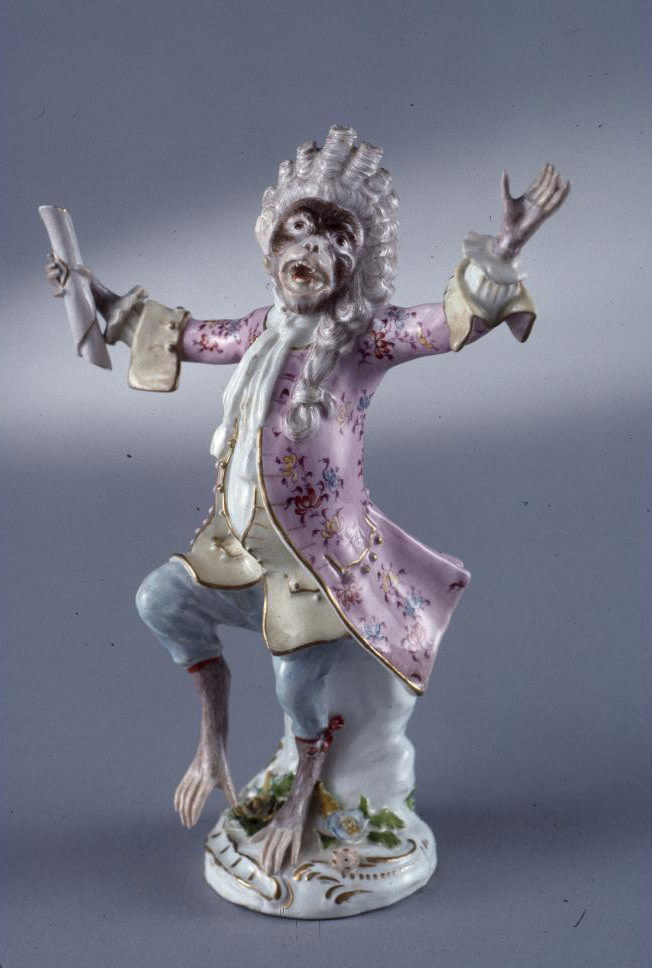
Although Potter is the only 18th century American tailor that is currently known to have made clothes for a cat, he certainly was not the first person to amuse himself by dressing an animal. Throughout the 18th Century, artists have depicted cats and especially monkeys wearing clothing in portraits, often playing the role of humans, mirroring the actions, foibles, and follies of human beings. In the 1730s in France, the princes de Condé-Bourbon commissioned the painter, Christophe Huet, to decorate their boudoir at the Chateau de Chantilly with murals of monkeys depicted as soldiers, hunters, and gentry (see links to sources below). The porcelain manufactories of Meissen in Germany produced figurines of monkeys dancing and singing and were eventually being knocked off by English porcelain manufacturers in Chelsea in the 1740s. Artists such as John Wooten even depict monkeys from life such as one wearing a red suit while holding a favorite poodle of the Duke of Leeds as a groom would a horse. No less than four silk suits of clothes made for monkeys in the 18th Century survive; two in the Musée des Arts Décoratifs in Paris, and the other two in German collections: the Deutsches Historisches Museum in Berlin and the Bavarian National Museum in Munich. The skeletal remains of three pet monkeys- a green monkey, a West African baboon, and the other unidentified- have been found archeologically in Williamsburg. Unfortunately, we do not know if any local tailor made clothing for them.
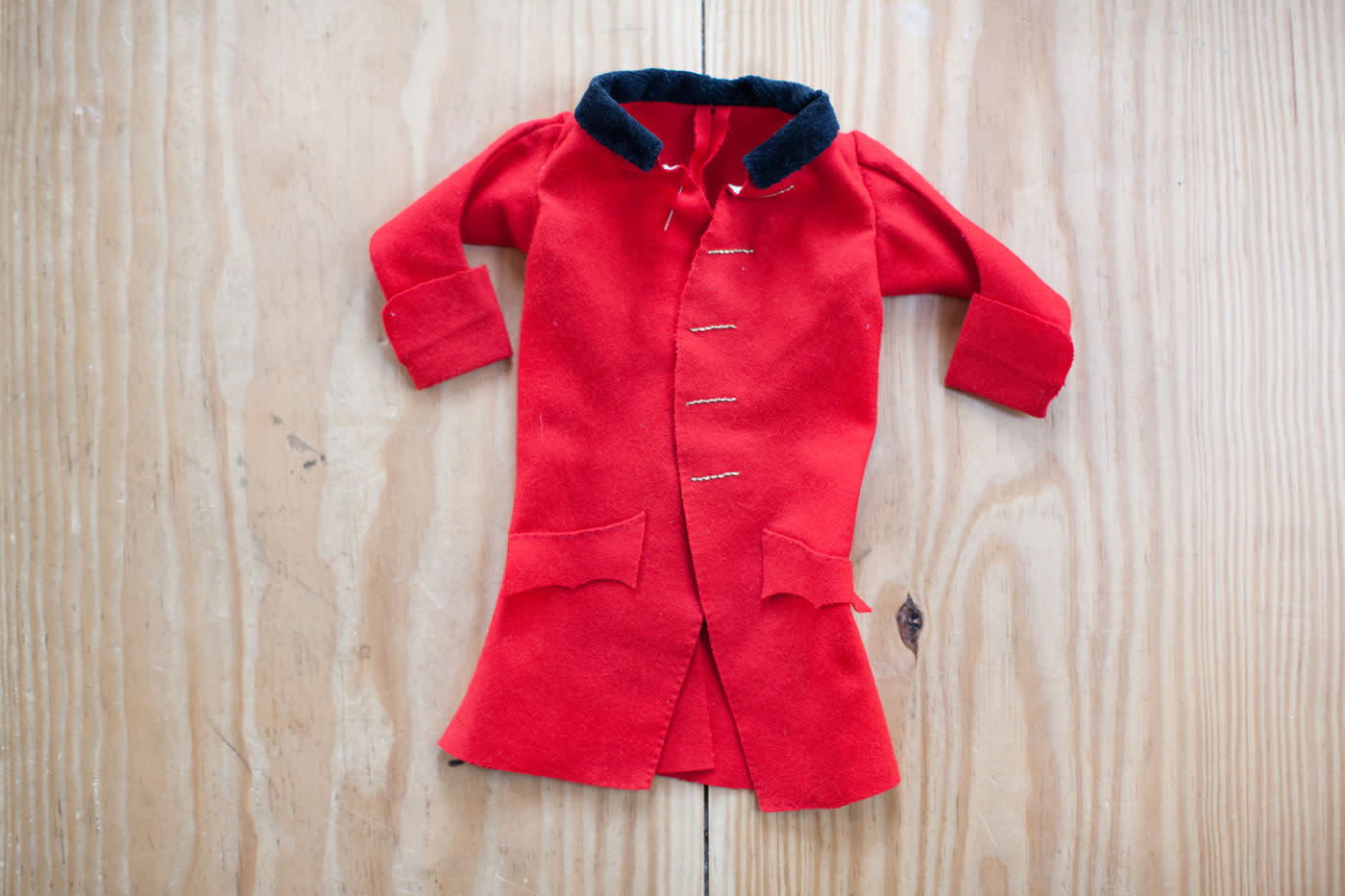
Monkeys, while seemingly preferred, are not alone in the sartorial attention they received, a painting by Joseph Wright of Derby in 1770 depicts two girls dressing a kitten in doll’s clothes by candlelight. The young cat in the painting seems bemused with attention. Collins’ shop cat was not...
“Late in the evening I got my suit of clothes finished; I caught the cat, put on the whole suit – coat, vest and small-clothes – buttoned all on tight, and set down my cat to inspect the fit; unfortunately for me there was a hole through the floor close to the fireplace, just large enough for the cat to pass down; after making some efforts to get rid of the clothes, and failing, pussy descended through the hole and disappeared…”
However he managed it, Collins succeeded in completing his suit and was left to contemplate his labors and its fruits. Today, in the Tailors’ Shop at Colonial Williamsburg, the apprentices follow Collins’ industrious example by making a suit of clothes for a cat on the first Christmas on which the Master is away on vacation.
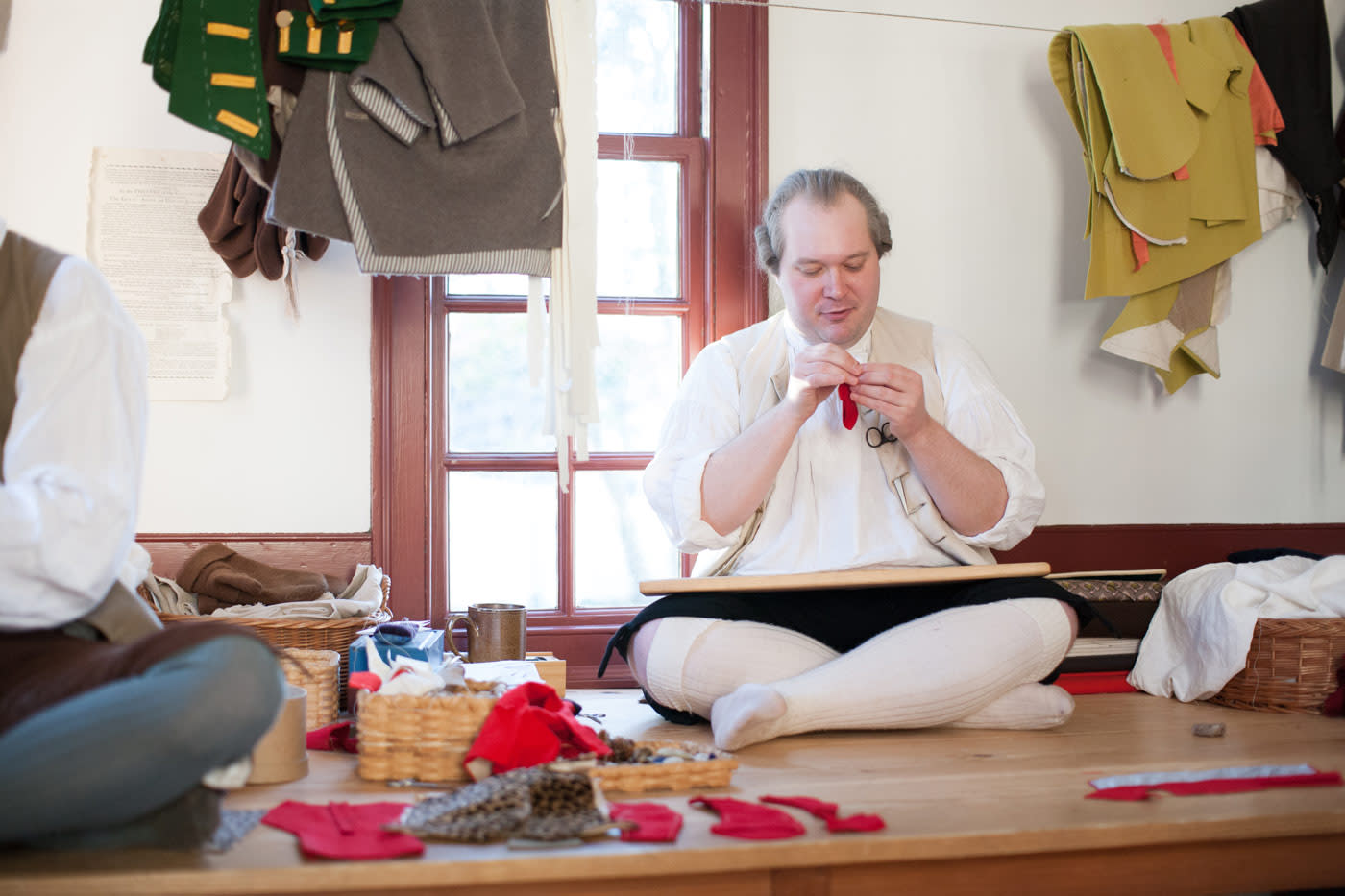

On Christmas Day of 2014, the senior apprentice within the shop, Michael McCarty, made a red coat for his cat beginning this Christmas tradition. The newest apprentice, Timothy Logue, has become the next to follow this vestiary tradition by making a new coat and waistcoat in a scarlet broadcloth and leopard-spotted velvet for McCarty’s now fully-grown cat.
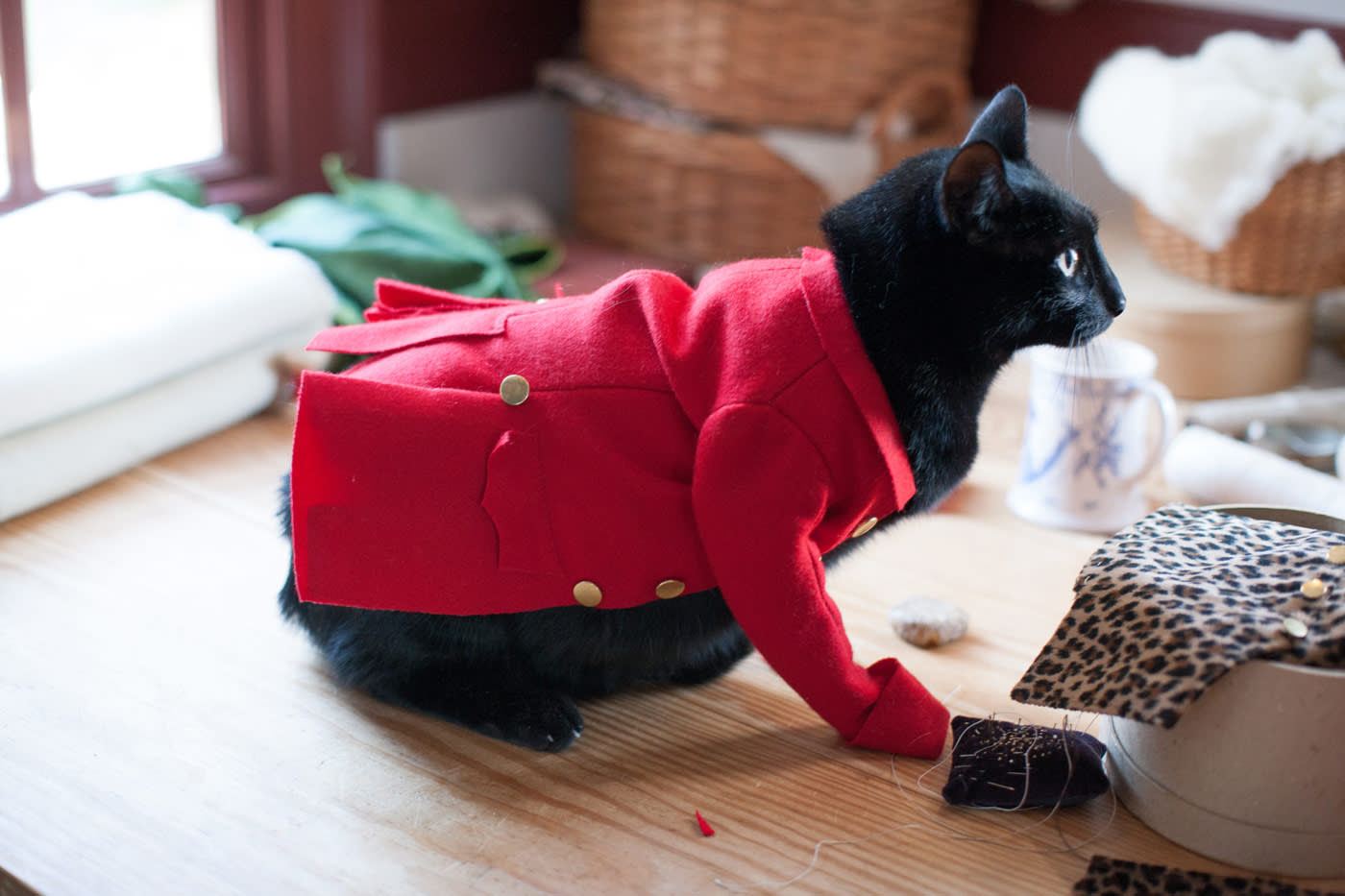
Both Mr. McCarty and Mr. Logue can, however, rest easy knowing that they will experience no shame on being made to account for their Christmas Day of work to their Master. The young apprentice’s story is not yet finished and as the poor young Collins would find, he would not get off so easily.
“I consoled myself with a hope that the cat would extricate itself from its incumbrance [sic], but not so; night came and I had made on a good fire and seated myself for some two or three hours after dark, when who should make their appearance but my master and mistress and two young men, all in good humor, with two or three bottles of rum. After all were seated around the fire, who should appear amongst us but the cat in his uniform. I was struck speechless, the secret was out and no chance of concealing; the cat was caught, the whole work inspected and the question asked, is this your day’s work? I was obliged to answer in the affirmative; I would then have been willing to take a good whipping, and let it stop there, but no, to complete my mortification the clothes were carefully taken off the cat and hung up in the shop for the inspection of all customers that came in.”
So goes the story of an apprenticeship to a Tailor. The apprenticeship was not to last though, as within a year of that remarkable Christmas, the young Collins would be released from his bond. Unlike the young apprentice of our story, Mr. Logue will go on to complete his apprenticeship at Colonial Williamsburg and over the course of the seven-year long curriculum, move beyond the making of suits for cats to learn the arts and mysteries of the ancient trade to which James Potter Collins belonged in 1775.
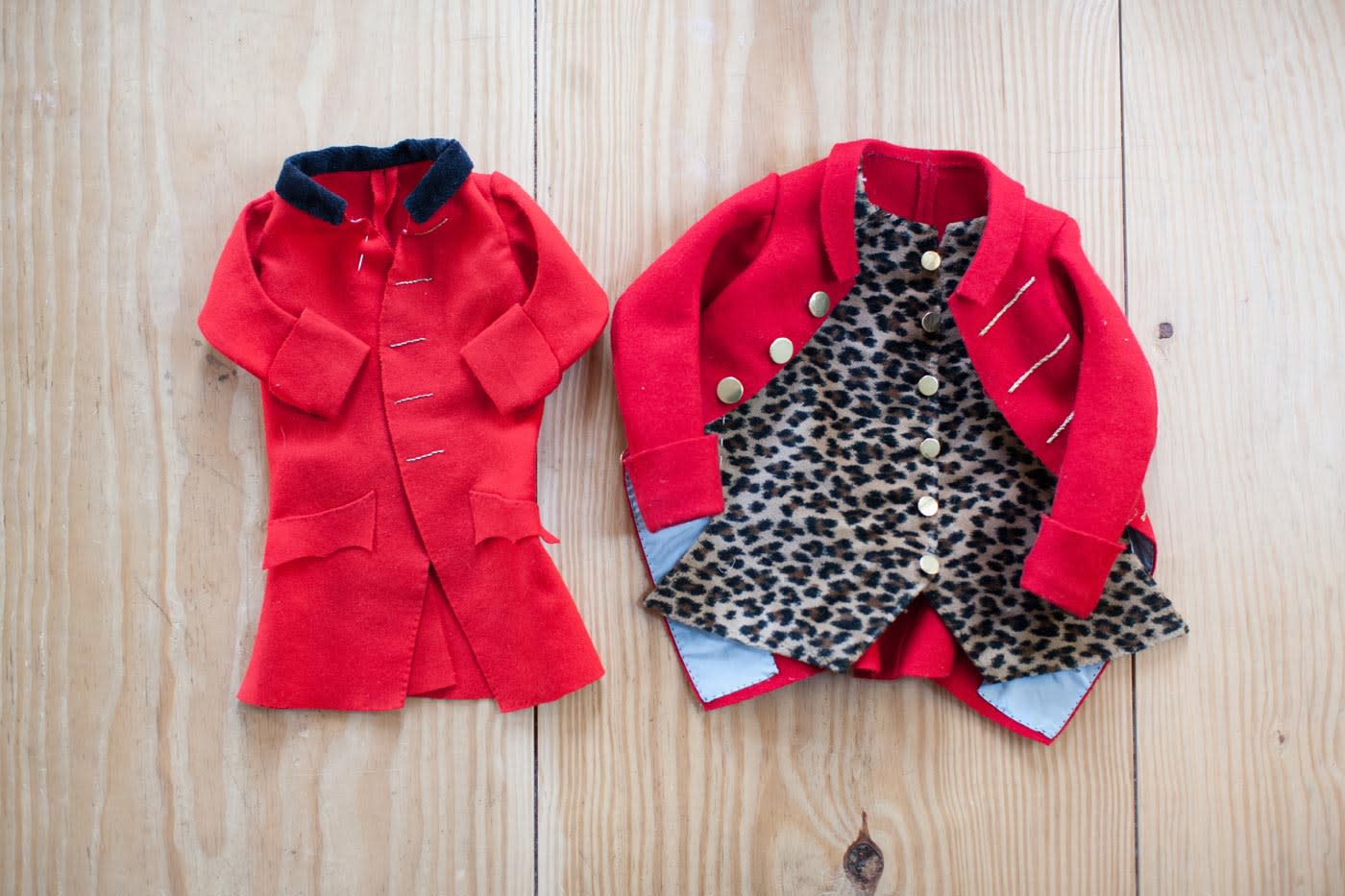
Further Links
Autobiography of James Potter Collins
ARCHIVE.ORG/DETAILS/AUTOBIOGRAPHYOFR00COLL/PAGE/N25
Chateau de Chantilly, The Grand Singere
John Wootton, A Favorite Poodle & Monkey belonging to Thomas Osborne, 4th Duke of Leeds, VA
ARTHIVE.COM/ARTISTS/3158~JOHN_WOOTTON/WORKS/258160~A_FAVORITE_POODLE_AND_MONKEY
Monkey Clothes, Musée des arts Decoratifs, Paris
COLLECTIONS.LESARTSDECORATIFS.FR/HABIT-DE-SINGE
COLLECTIONS.LESARTSDECORATIFS.FR/HABIT-DE-SINGE-MANTEAU
Monkey Suits, Germany Deutsches Historisches Museum
WWW.DHM.DE/DATENBANK/DHM.PHP?SEITE=5&FLD_0=99006490
Bavarian National Museum
WWW.BAYERISCHES-NATIONALMUSEUM.DE/INDEX.PHP?ID=1
Joseph Wright of Derby, Two Girls Dressing a Kitten by Candlelight, private collection